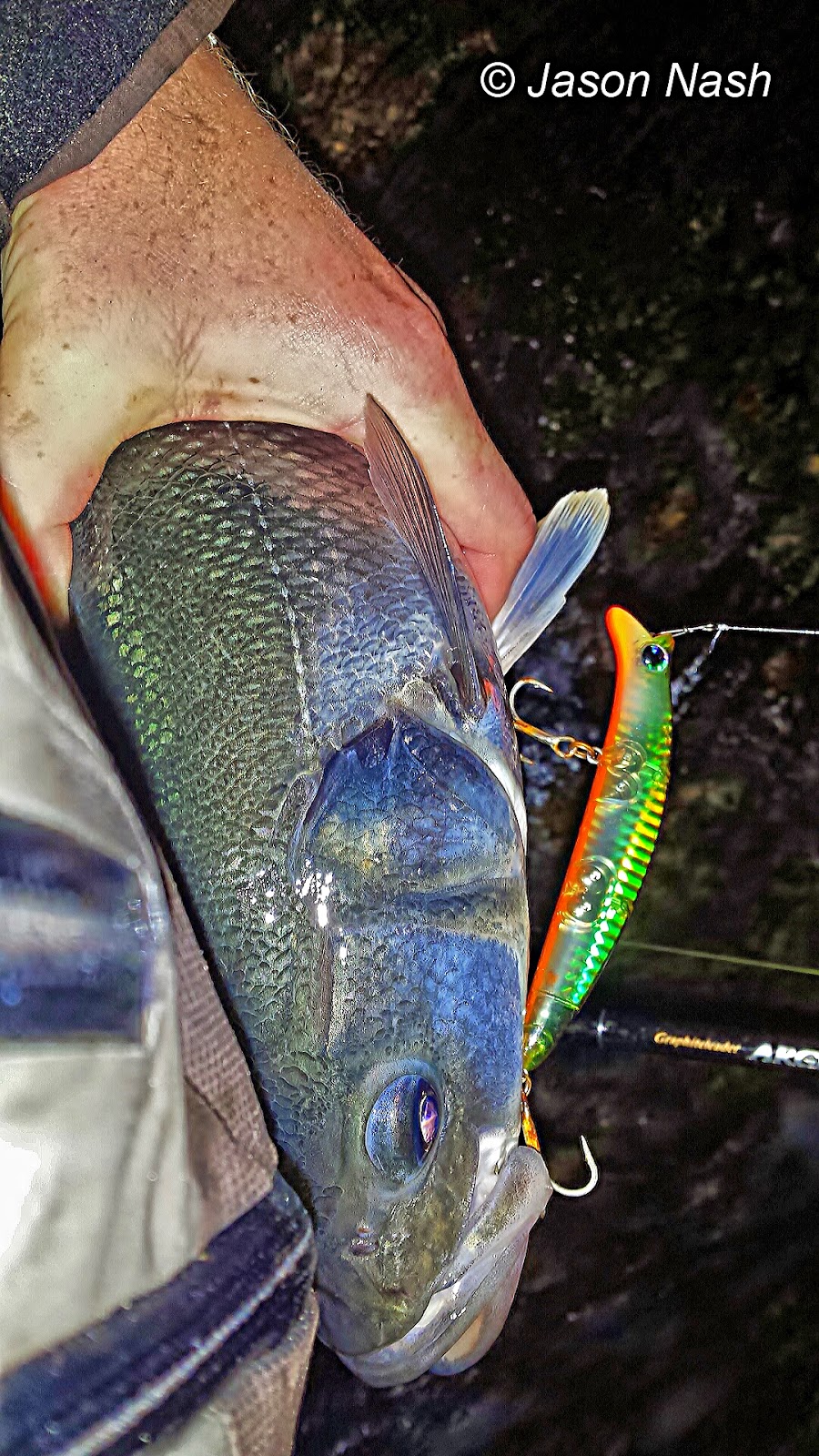The shear power of this fish was breath taking. Every time I thought she was tiring she sprinted off on another surging run. In prime condition, we admired her before slipping her back into the water. Such a good start to the evening, was this to be it or were there more Dicentrarchus labrax to come? Rob hasn't been fishing for long but has really taken to the sport this year. He caught some great trout in Ballinlough during the spring and ever since has been doing his best to latch onto a bass. All his efforts were about to pay off as the pair of us enjoyed some hectic sport over the next hour and a half.
Putting a very slow, steady retrieve into practise whilst keeping the rod tip up from the water, we hooked 12 fish in all. Sport was frantic as we brought 3 fish each to hand. 2 fish totally did me in by going around rocks and breaking my braid, taking with them my lures. We all hate losing lures but the presence of so many obliging fish more than made up for it. The rest of the fish landed were schoolies in the 2-4lb bracket.
The tides are beginning to build up again and the winds will hopefully die down a bit so hopefully day time sport will improve soon. The weather is still mild and the water temperature is around 15 degrees Celsius so we should see bass attacking our lures for another while yet.
Keeping an eye on the river, fish continued to ascend the weir in Bandon in big numbers. Its such a magnificent sight and many people took the chance to embrace one of nature's greatest events.











.jpg)





